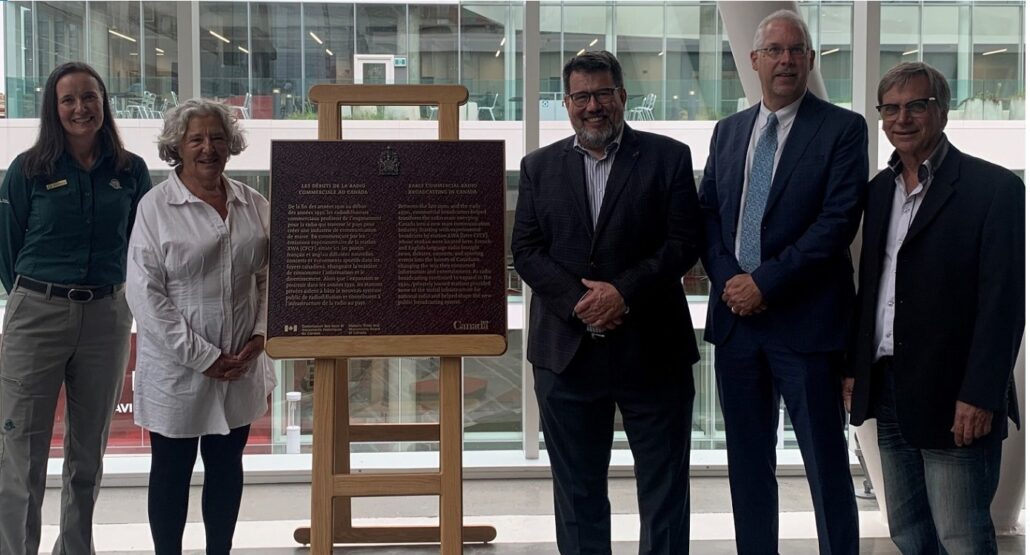The Government of Canada officially commemorated the national historic significance of early commercial radio on Monday.
The Marconi Wireless Telegraph Company ushered in the foundation for commercial radio in Canada in 1918. From its Montréal facility, the company experimented with wireless broadcasting, receiving a licence for experimental station XWA in December 1919.
Its early transmissions were heard only by those with “crystal sets” or equivalent experimental devices. XWA became CFCF on Nov. 4, 1922, broadcasting at 500 watts from the country’s first broadcast studio in the Canada Cement Building in Phillips Square.
“From that single station grew an industry that over the course of the next 12 years ushered in the modern era of mass communication,” reads a government release. “By 1922, there were 39 radio stations in Canada. By 1931, that number had jumped to 77. Even in the midst of the Great Depression, the radio industry was growing.”
“The Canadian Radio Broadcasting Commission, Canada’s first public broadcaster, was established in 1932 and with it the era of exclusively private radio came to an end, but it was a period that would establish the basis of Canadian broadcasting for the 20th century. In a little over a decade, radio had gone from a niche hobby to a major cultural industry.”

Early commercial radio’s national historic significance was marked with the unveiling of a plaque in Montreal. It will be installed on Williams Street in Old Montreal, near the site of the former Marconi plant and studios.
Largely driven by public nominations, the designation process falls under Parks Canada’s National Program of Historical Commemoration, which began in 1919. To date, more than 2,200 designations have been made nationwide.
“On behalf of the Government of Canada, I am honoured to commemorate the national historic significance of early commercial radio broadcasting in Canada. Historic designations reflect Canada’s rich and varied history and I encourage all Canadians to learn more about early commercial radio broadcasting in Canada and its important contributions to Canada’s heritage,” said Steven Guilbeault, Minister of Environment and Climate Change and Minister responsible for Parks Canada, in a statement.
“Just like Marconi, who was a daring and persevering entrepreneur, the community of researchers at ÉTS is striving today to imagine the telecommunications of tomorrow, which will serve not only to interconnect people, but also billions of objects that will be part of our daily lives, whether to improve our health, monitor the state of our infrastructure in real time, guide our transport or adapt to climate change,” added François Gagnon,
Executive Director of École Technologique Supérieure, who were the proponents for the nomination.
Subscribe Now – Free!
Broadcast Dialogue has been required reading in the Canadian broadcast media for 30 years. When you subscribe, you join a community of connected professionals from media and broadcast related sectors from across the country.
The Weekly Briefing from Broadcast Dialogue is delivered exclusively to subscribers by email every Thursday. It’s your link to critical industry news, timely people moves, and excellent career advancement opportunities.
Let’s get started right now.



